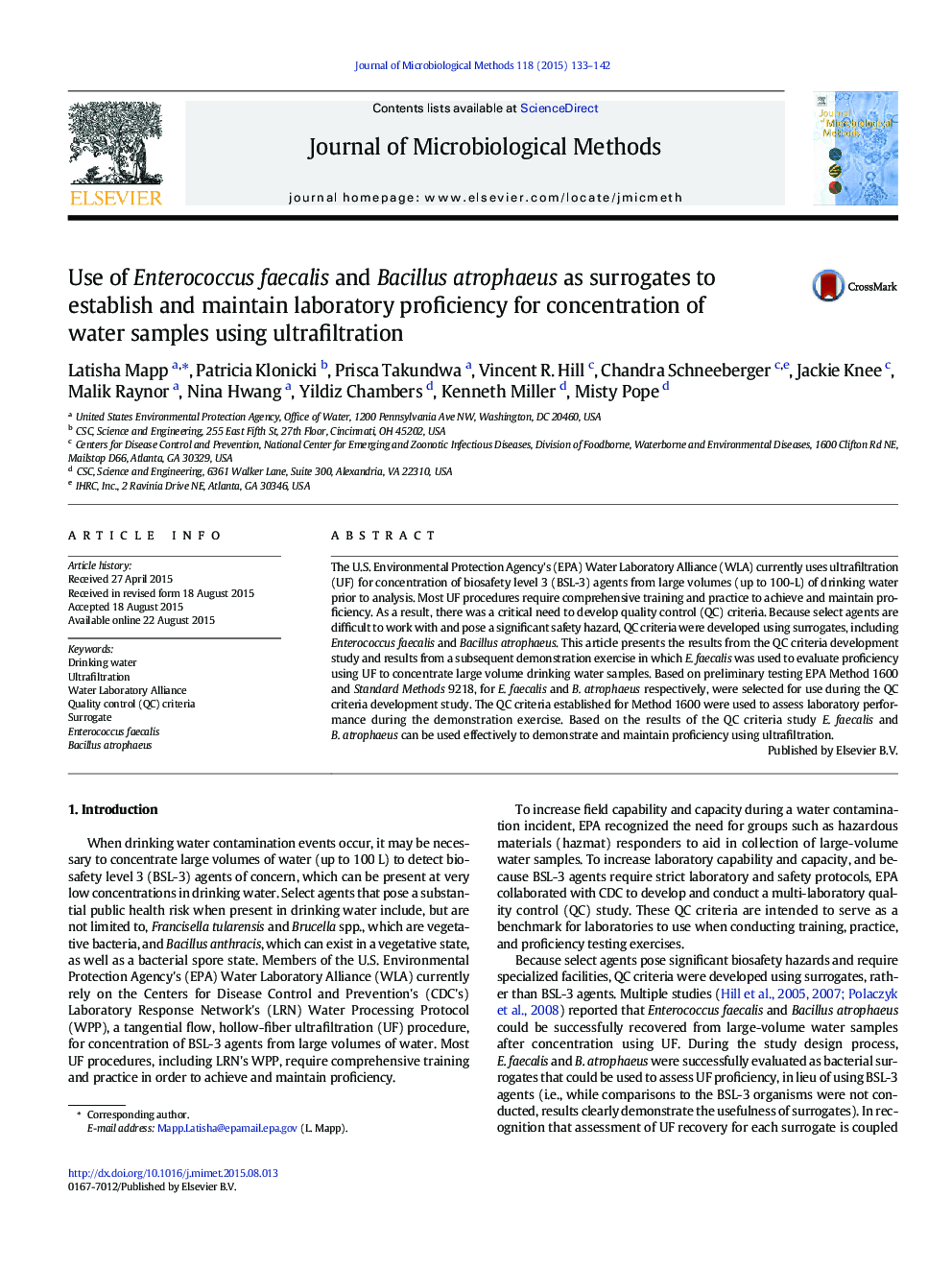| Article ID | Journal | Published Year | Pages | File Type |
|---|---|---|---|---|
| 2089767 | Journal of Microbiological Methods | 2015 | 10 Pages |
•Enterococcus faecalis and Bacillus atrophaeus successful BSL-3 surrogates for ultrafiltration.•QC criteria can be used by analysts to demonstrate ultrafiltration proficiency.•Enterococcus faecalis used to assess ultrafiltration proficiency during demonstration study.
The U.S. Environmental Protection Agency's (EPA) Water Laboratory Alliance (WLA) currently uses ultrafiltration (UF) for concentration of biosafety level 3 (BSL-3) agents from large volumes (up to 100-L) of drinking water prior to analysis. Most UF procedures require comprehensive training and practice to achieve and maintain proficiency. As a result, there was a critical need to develop quality control (QC) criteria. Because select agents are difficult to work with and pose a significant safety hazard, QC criteria were developed using surrogates, including Enterococcus faecalis and Bacillus atrophaeus. This article presents the results from the QC criteria development study and results from a subsequent demonstration exercise in which E. faecalis was used to evaluate proficiency using UF to concentrate large volume drinking water samples. Based on preliminary testing EPA Method 1600 and Standard Methods 9218, for E. faecalis and B. atrophaeus respectively, were selected for use during the QC criteria development study. The QC criteria established for Method 1600 were used to assess laboratory performance during the demonstration exercise. Based on the results of the QC criteria study E. faecalis and B. atrophaeus can be used effectively to demonstrate and maintain proficiency using ultrafiltration.
